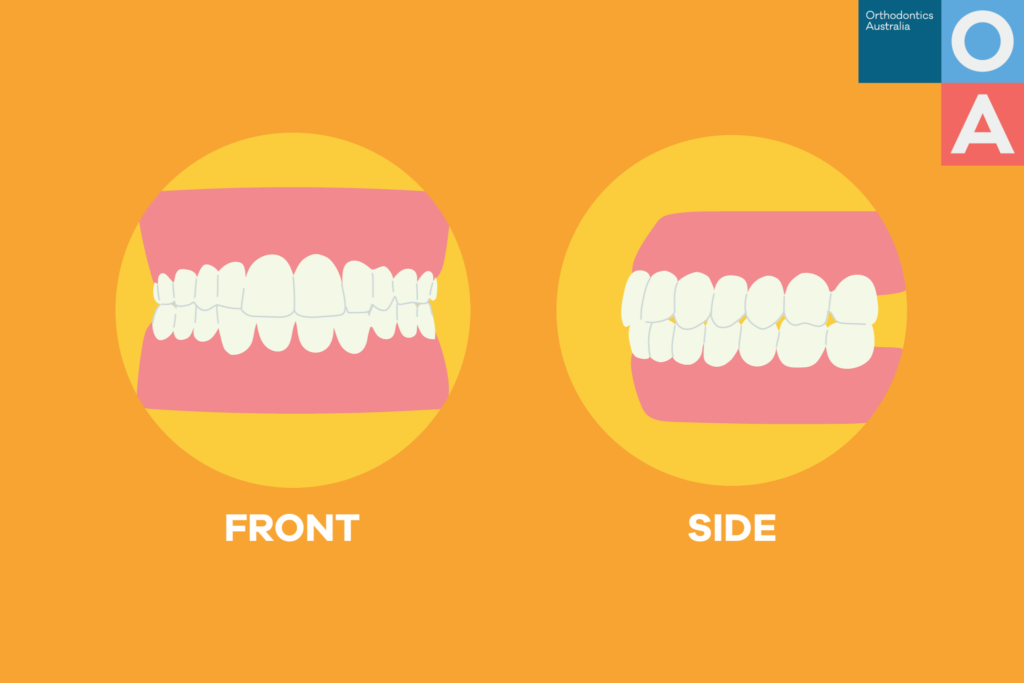
We rarely think about our teeth when we’re not using them. However, it is important to notice their resting position for health and longevity. A perfect bite is formed when the upper and lower teeth touch lightly.
Signs of improper resting oral position:
– Your lips are apart when resting
– Strained or wrinkled lips when closed
– Rolled out upper lip or crusty lips
– Accentuated Cupid’s bow appearance on the upper lip
– Flattened cheeks
– Jaw recessed from an ideal position
– Nose-lip angle is greater than 110 degrees.
Some of the additional signs are:
Jaw pain
The joint that hinges the lower jaw to the skull is called the temporomandibular joint and is present on each side of the face. Pain, stiffness or soreness in the joint during movement can indicate orthodontic problems.
Headaches
Misalignment of teeth can lead to strained and tensed muscles that can result in mild to severe headaches. If you’re experiencing headaches often, it could be due to the arrangement of your teeth.
Speech problems
While this is an uncommon symptom, trouble pronouncing words can be an indicator of a misaligned jaw and teeth.
Teeth grinding
Bruxism or teeth grinding and clenching at night is relatively common and can be cured through treatments that involve mouthguards, medication and therapy. Damage from this condition can cause a variety of problems including gum disease, jaw pain, tooth sensitivity and worn teeth.
Here are the primary factors to consider while evaluating the position of your teeth when they are at rest:
– Your tongue is behind the teeth and touches the roof of your mouth
– Lips are relaxed
– Teeth are apart and your jaw is relaxed
– There is no discomfort.
A flawed position of the resting teeth is an indication of misalignment of the teeth. This also creates a greater risk of wear to both teeth and jaw muscles which can develop into more serious oral problems.

Should top teeth overlap the bottom teeth?
Usually, there is an overlap of around 4mm. It is considered a deep bite if less than 90% of teeth are visible.
A bad bite can be caused due to various causes including::
– Genetics
– Lost, extra or impacted teeth
– Birth defects
– Injury
– Habits like thumb sucking.
What should your bite look like when viewed from the front?
It’s the view you see when you look in the mirror. The ideal view is when the edges of the upper front teeth are parallel to the top of the lower lip. If too much gum is visible, the upper teeth are too long. Additionally, the upper midline should line up with the middle of the upper lip, and the lower lip line should line up with the upper midline.
Should your teeth touch when sleeping?
The ideal resting position is non-interactive. Hence, your bottom and top teeth should not touch while sleeping.
How can I align my teeth in the right resting position?
Regardless of the problem, the correct orthodontic treatment option can correct your misaligned tooth arrangement or position. Orthodontic treatments such as clear aligners and braces can help to correct your resting teeth posture. In extreme cases, corrective surgery or dental implants might be suggested by the orthodontist.
It is critical to understand that teeth movement cannot happen naturally, so an orthodontic intervention is necessary to get the best result and a straight smile. A bad
bite can impact your life in more than one way and we can’t stress enough how a straight smile improves overall confidence and quality of life.
While there are lots of DIY internet trends including mewing or facial restructuring, only a specialist orthodontist like Dr Daniel de Angelis is trained in the evaluation of your oral resting position. With over 3700 hours of orthodontic training, he is a specialist in the movement of teeth, the jaw and facial bones.
The position of your teeth while at rest can sometimes be a sign of a more significant dental issue. If you’re experiencing any discomfort or noticing any irregularities, it’s essential to consult with an orthodontist like Dr Daniel de Angelis. He can help you understand if there is an underlying problem and recommend the best course of action to protect and maintain your smile. Addressing dental issues early on can help prevent them from becoming more severe and complex to treat in the future.
To book your no-obligation, initial consultation with Dr Daniel De Angelis call 133 TOC or submit an online enquiry and one of our team members will reach out to you. Orthodontic treatments don’t have to be daunting. Here’s what to expect at your first orthodontic appointment.


